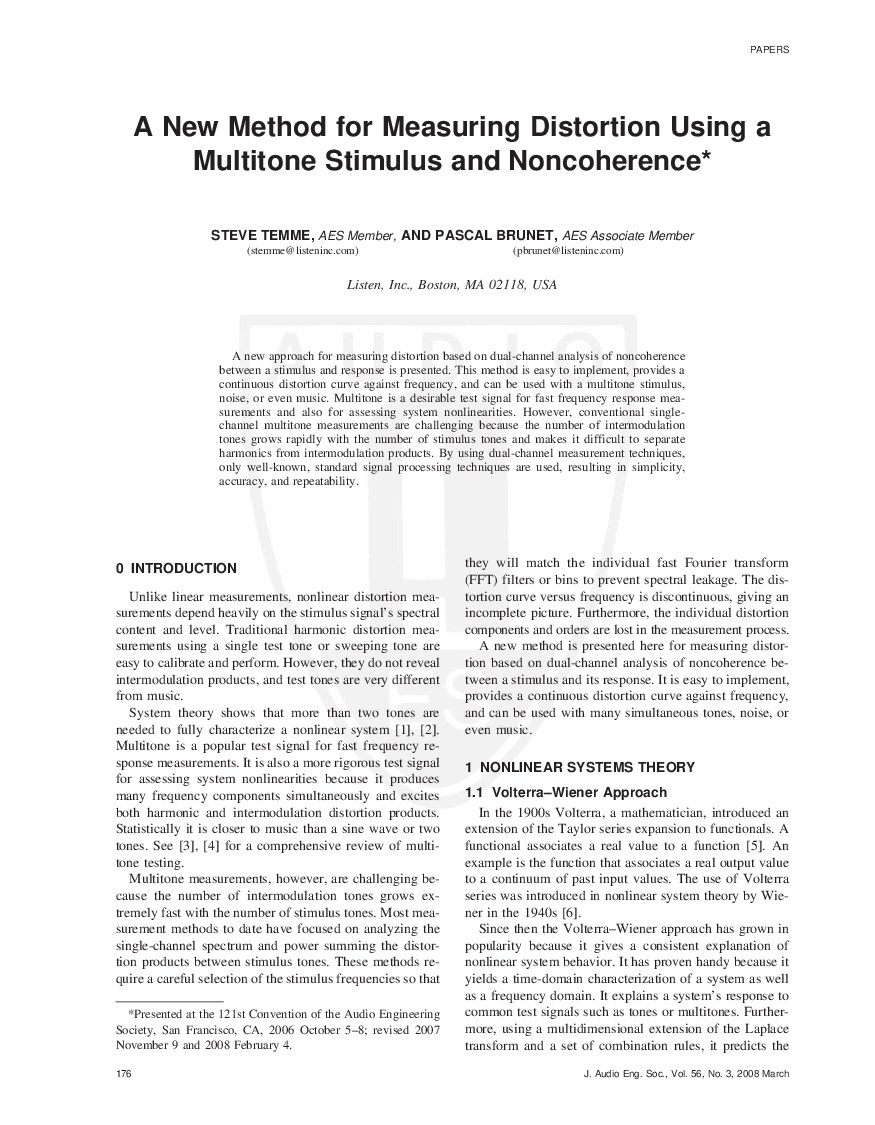Home / Publications / E-library page
You are currently logged in as an
Institutional Subscriber.
If you would like to logout,
please click on the button below.
Home / Publications / E-library page
Only AES members and Institutional Journal Subscribers can download
A new approach for measuring distortion provides a continuous distortion curve versus frequency, and the method is suitable for use with noise, music, and multitone stimuli. Distortion measures are derived from dual-channel analysis of the noncoherence between the stimulus and the response. The mathematics is based on Volterra theory, which is an extension of linear system theory but applied to nonlinear systems. Because the technique uses standard signal processing, the approach is simple, accurate, and repeatable.
Author (s): Temme, Steve; Brunet, Pascal
Affiliation:
Listen, Inc., Boston, MA 02118, USA
(See document for exact affiliation information.)
Publication Date:
2008-03-06
Import into BibTeX
Permalink: https://aes2.org/publications/elibrary-page/?id=14381
(1408KB)
Click to purchase paper as a non-member or login as an AES member. If your company or school subscribes to the E-Library then switch to the institutional version. If you are not an AES member Join the AES. If you need to check your member status, login to the Member Portal.

Temme, Steve; Brunet, Pascal; 2008; A New Method for Measuring Distortion Using a Multitone Stimulus and Noncoherence [PDF]; Listen, Inc., Boston, MA 02118, USA; Paper ; Available from: https://aes2.org/publications/elibrary-page/?id=14381
Temme, Steve; Brunet, Pascal; A New Method for Measuring Distortion Using a Multitone Stimulus and Noncoherence [PDF]; Listen, Inc., Boston, MA 02118, USA; Paper ; 2008 Available: https://aes2.org/publications/elibrary-page/?id=14381